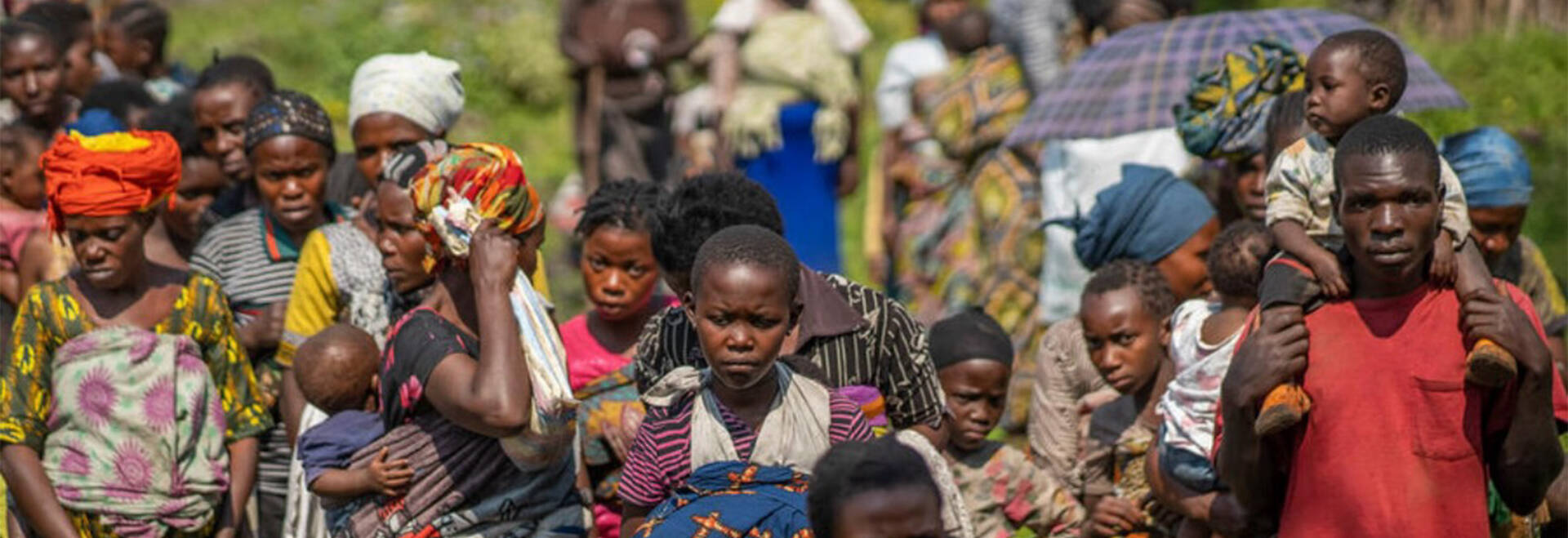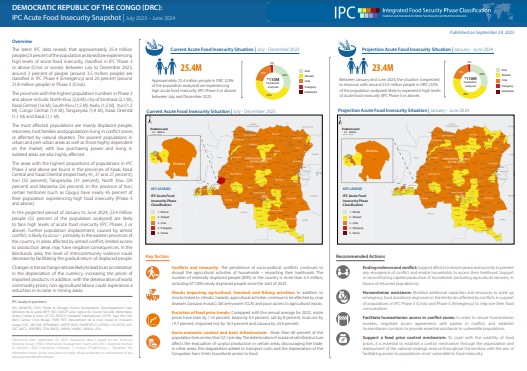
- © WFP
Democratic Republic of the Congo: 25.4 million people experience high levels of acute food insecurity between July and December 2023 driven by conflict and insecurity
Between July and December 2023, approximately 25.4 million people are experiencing high levels of acute food insecurity, classified in IPC Phase 3 or above (Crisis or worse). This includes around 3 percent of people (around 3.5 million people) classified in IPC Phase 4 (Emergency) and 20 percent (around 21.8 million people) in Phase 3 (Crisis).
The most affected populations are mainly displaced people, returnees, host families and populations living in conflict zones or affected by natural disasters. The persistence of socio-political conflicts continues to disrupt the agricultural activities of households – impacting their livelihoods. The number of internally displaced people (IDPs) in the country is more than 6.3 million, including 677,000 newly displaced people since the start of 2023.
The provinces with the highest population numbers in Phase 3 and above include: North-Kivu (2,6 M), city of Kinshasa (2,1 M), Kasaï Central (1,6 M), South-Kivu (1,5 M), Kwilu (1,5 M), Ituri (1,3 M), Congo Central (1,4 M), Tanganyika (1,4 M), Kasaï Oriental (1,1 M) and Kasaï (1,1 M).
In the projected period of January to June 2024, 23.4 million people (22 percent of the population analysed) are likely to face high levels of acute food insecurity (IPC Phases 3 or above). Further population displacement, caused by armed conflict, is likely to occur – primarily in the eastern provinces of the country.
Join our mailing list


